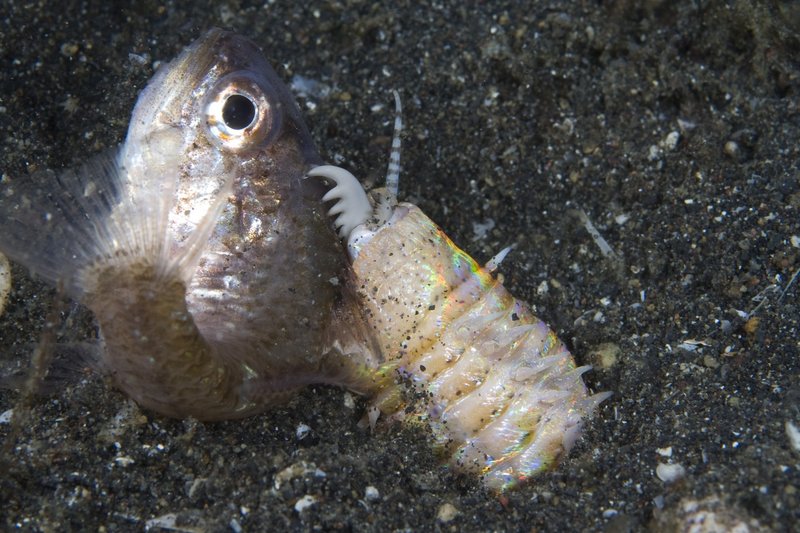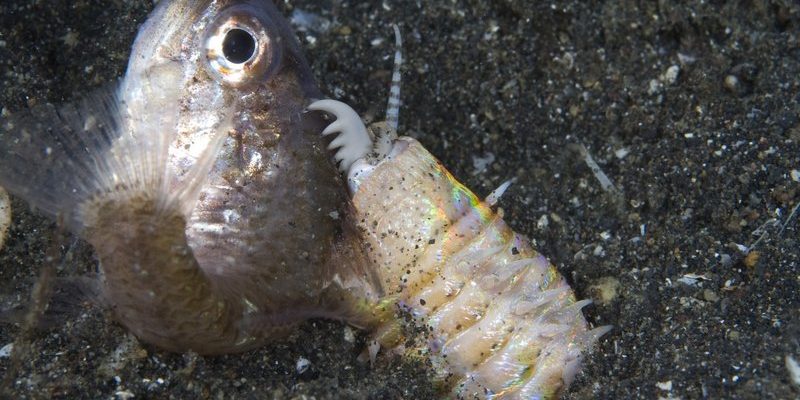
Picture a quiet little corner of your aquarium: colorful plants sway gently, and your tiny fish dart around. Suddenly, a long, greenish-brown appendage lashes out from the substrate, snatching one of your prized guppies before you even know what happened. Here’s the thing—Bobbit worms can be tricky, and if you want to protect your fish, you’ll need to be proactive. Thankfully, there are several steps you can take to minimize the risk.
Understanding Bobbit Worms
First, let’s dive into what exactly a Bobbit worm is. These marine creatures, belonging to the Eunicidae family, can grow quite long, reaching up to 10 feet in some cases! They are known for their *amazing ability* to camouflage themselves in the sand or substrate of your aquarium. You could say they’re the ninjas of the ocean floor, waiting patiently to ambush unsuspecting fish.
Once they capture their prey, they use their sharp jaws to hold on tight, making it nearly impossible for small fish to escape. If you’re keeping a tank that houses small fish like neon tetras or cherry shrimp, you need to be aware of the potential danger Bobbit worms pose. The last thing you want is to come into your room and find that your fish are disappearing without a trace.
Creating a Suitable Habitat
One of the best ways to protect your small fish is by creating a suitable habitat that minimizes the risk of Bobbit worm predation. Start with your aquarium substrate. Using a coarser substrate like crushed coral can make it harder for these worms to dig and hide.
Consider adding plenty of decorations and hiding spots for your fish. Plants, rocks, and even aquarium-safe tunnels can help your fish feel secure. When fish have places to hide, they might be less likely to venture into areas where Bobbit worms are lurking. Honestly, you want your fish to feel like they’re in a safe little haven, not a scary jungle!
Routine Tank Maintenance
Regular maintenance of your aquarium is key to preventing Bobbit worms from thriving. Make it a habit to siphon the substrate during water changes. This helps remove debris and any potential Bobbit worm eggs. When cleaning, look for any signs of these worms. They may leave behind trails in the substrate, which can signal their presence.
Also, keep an eye on your water parameters. Bobbit worms thrive in stable environments, so maintaining optimal temperature, pH, and salinity is essential. If your tank conditions fluctuate too much, it may become inviting to all sorts of unwanted pests, including Bobbit worms.
Choosing the Right Tank Mates
Not every fish species can coexist harmoniously. When selecting tank mates, think about their size and behavior. Larger fish might be able to defend themselves against Bobbit worms, while smaller ones could easily fall prey. You might be wondering what fish options are safest—consider adding species known for their hardiness, like some types of barbs or larger danios.
In addition, fish that are known to forage at the bottom of the tank may help keep the substrate clean and less hospitable for Bobbit worms. For example, certain types of loaches are natural bottom feeders and might help disturb the substrate where Bobbit worms hide, making it harder for them to remain hidden.
Monitoring for Bobbit Worms
Keep vigilant about monitoring your aquarium for signs of Bobbit worms. If you suspect they’re there, act quickly. You can use a flashlight to inspect the substrate during feeding times. If you see long, thin appendages that quickly retract into the substrate, it’s likely a Bobbit worm.
Additionally, consider setting up a quick trap using a small piece of fish or shrimp. Place it near potential hiding spots and check back regularly. If you find a Bobbit worm has taken the bait, you can then take measures to remove it safely from your tank.
Using Natural Deterrents
What if I told you that some natural solutions can help deter Bobbit worms? Introducing certain types of cleaner shrimp or specific fish can create a bit of competition. Cleaner shrimp, for example, tend to be very active and might even eat small invertebrates, including worm larvae. Additionally, some fish species like certain wrasses are known to hunt down these worms in a reef environment.
Of course, be sure to do your research on any new species you’re considering introducing. You want to make sure they can live peacefully with your current fish and won’t create additional problems.
When All Else Fails: Removal Strategies
If you find that Bobbit worms have infiltrated your tank despite your best efforts, don’t panic—you have options. Manual removal is one of the most effective, though requiring some caution. Using a pair of long tweezers or forceps, you can carefully extract the worm from the substrate. Just be sure to wear gloves, as these creatures can bite!
Alternatively, if you’re dealing with a severe infestation, you might think about doing a more thorough tank reset. This involves removing all fish and invertebrates and cleaning the substrate extensively. You may need to discard certain materials, like heavily infested rock or sand, to completely eradicate the problem.
Protecting your small fish from Bobbit worm predation isn’t an impossible task, but it does take diligence and care. By understanding these crafty predators and creating a safe habitat for your aquatic friends, you can enjoy a thriving aquarium. Remember to keep your tank clean, choose compatible tank mates, and stay alert for any signs of these stealthy hunters.
With a bit of effort and the right strategies, you can ensure your small fish swim safely in their underwater world, free from the threat of Bobbit worms. So grab a cup of coffee, enjoy your aquarium, and feel confident that you’re doing everything you can to keep your fish safe and happy!

